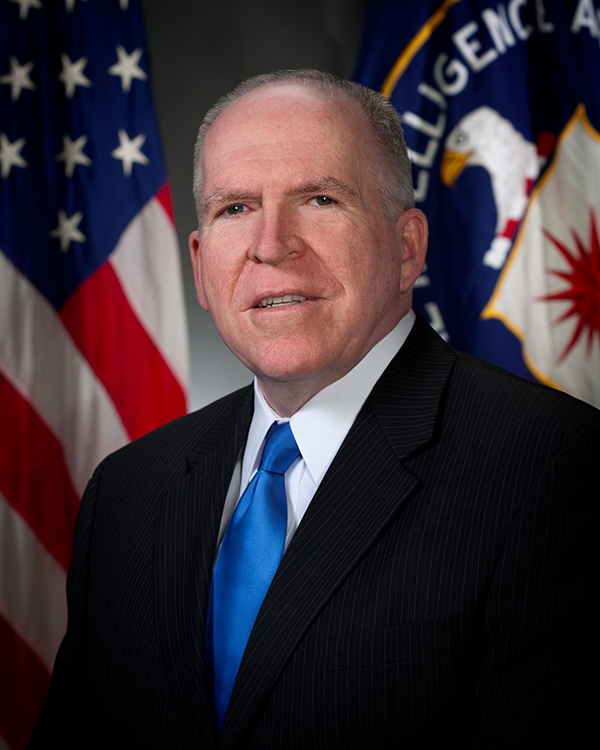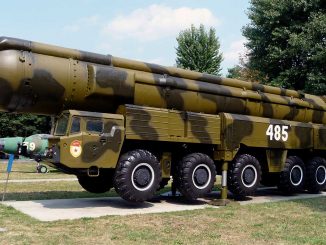ISIL is a formidable, resilient, and largely cohesive enemy, and we anticipate that the group will adjust its strategy and tactics in an effort to regain momentum.
Statement by Central Intelligence Agency Director John O. Brennan as Prepared for Delivery Before the Senate Select Committee on Intelligence, Washington DC, 16 June 2016. Source : CIA.
Chairman Burr, Vice Chairman Feinstein, and Members of the Committee: Thank you for inviting me to speak to you today in an open hearing about the Central Intelligence Agency, an agency and a workforce that I am enormously proud to be part of. I am privileged every day to lead the women and men of CIA, as they work around the clock and around the world, often in difficult and even dangerous locations, to help keep our country strong and free and our fellow citizens safe and secure.

Our hearing today takes place against the backdrop of a heinous act of wanton violence that was perpetrated against innocents in Orlando, Florida last weekend. We join the families and friends in mourning the loss of their loved ones who were killed in the attack, and we extend our best wishes for a full and speedy recovery of all those injured. This act of violence was an assault on the values of openness and tolerance that define us as a Nation.
In light of the events in Orlando, I would like to take this opportunity to offer the Committee our assessment of the terrorist threat our Nation and our citizens face, especially from the Islamic State of Iraq and the Levant, or ISIL.
On the battlefields of Syria and Iraq, the U.S-led coalition has made important progress against ISIL. The group appears to be a long way from realizing the vision that Abu Bakr al-Baghdadi laid out when he declared the “caliphate” two years ago in Mosul.
Several notable indicators are trending in the right direction. ISIL has lost large stretches of territory in both Syria and Iraq. Its finance and media operations have been squeezed. And it has struggled to replenish its ranks of fighters, in part because fewer foreign fighters are traveling to Syria. Moreover, some reports suggest that a growing number of ISIL members are becoming disillusioned with the group and are eager to follow in the footsteps of members who have already defected.
The anti-ISIL Coalition is taking steps to exploit these vulnerabilities. In addition to efforts underway to liberate cities like Fallujah and Manbij, the Coalition is also removing ISIL leaders from the battlefield, thereby reducing the group’s capabilities and its will-to-fight. Last month, for example, a US airstrike killed an influential ISIL leader in Al Anbar.
ISIL, however, is a formidable, resilient, and largely cohesive enemy, and we anticipate that the group will adjust its strategy and tactics in an effort to regain momentum.
In the coming months, we can expect ISIL to probe the front lines of its adversaries for weaknesses, to harass the forces that are holding the cities it previously controlled, and to conduct terror attacks against its enemies in Iraq and Syria.
To compensate for territorial losses, ISIL will probably rely more on guerrilla tactics, including high-profile attacks outside territory it holds. A steady stream of attacks in Baghdad and Damascus demonstrates the group’s ability to penetrate deep inside enemy strongholds.
Beyond its losses on the battlefield, ISIL’s finances are taking a hit as well. Coalition efforts have reduced the group’s ability to generate revenue and have forced it to cut costs and to reallocate funds.
Yet ISIL is adapting to the Coalition’s efforts, and it continues to generate at least tens of millions of dollars in revenue per month, primarily from taxation and from crude oil sales.
Unfortunately, despite all our progress against ISIL on the battlefield and in the financial realm, our efforts have not reduced the group’s terrorism capability and global reach. The resources needed for terrorism are very modest, and the group would have to suffer even heavier losses of territory, manpower, and money for its terrorist capacity to decline significantly.
Moreover, the group’s foreign branches and global networks can help preserve its capacity for terrorism regardless of events in Iraq and Syria. In fact, as the pressure mounts on ISIL, we judge that it will intensify its global terror campaign to maintain its dominance of the global terrorism agenda.
Since at least 2014, ISIL has been working to build an apparatus to direct and inspire attacks against its foreign enemies, resulting in hundreds of casualties. The most prominent examples are the attacks in Paris and Brussels, which we assess were directed by ISIL’s leadership.
We judge that ISIL is training and attempting to deploy operatives for further attacks. ISIL has a large cadre of Western fighters who could potentially serve as operatives for attacks in the West. And the group is probably exploring a variety of means for infiltrating operatives into the West, including refugee flows, smuggling routes, and legitimate methods of travel.
Further, as we have seen in Orlando, San Bernardino, and elsewhere, ISIL is attempting to inspire attacks by sympathizers who have no direct links to the group. Last month, for example, a senior ISIL figure publicly urged the group’s followers to conduct attacks in their home countries if they were unable to travel to Syria and Iraq.
At the same time, ISIL is gradually cultivating its global network of branches into a more interconnected organization. The branch in Libya is probably the most developed and the most dangerous. We assess that it is trying to increase its influence in Africa and to plot attacks in the region and in Europe.
Meanwhile, ISIL’s Sinai branch has established itself as the most active and capable terrorist group in Egypt. The branch focuses its attacks on Egyptian military and government targets, but it has also targeted foreigners and tourists, as we saw with the downing of a Russian passenger jet last October.
Other branches, while also a concern, have struggled to gain traction. The Yemen branch, for instance, has been riven with factionalism. And the Afghanistan-Pakistan branch has struggled to maintain its cohesion, in part because of competition with the Taliban.
Finally, on the propaganda front, the Coalition is working to counter ISIL’s expansive propaganda machine. ISIL paints a carefully crafted image to the outside world, lauding its own military efforts, portraying its so-called “caliphate” as a thriving state, and alleging that the group is expanding globally even as it faces setbacks locally.
ISIL releases a multitude of media products on a variety of platforms—including social media, mobile applications, radio, and hardcopy mediums. To disseminate its official online propaganda, the group primarily uses Twitter, Telegram, and Tumblr, and it relies on a global network of sympathizers to further spread its messages.
In sum, ISIL remains a formidable adversary, but the United States and our global partners have succeeded in putting the group on the defensive, forcing it to devote more time and energy to try to hold territory and to protect its vital infrastructure. And though this will be a long and difficult fight, there is broad agreement in the international community on the seriousness of the threat, and on the need to meet it collectively and decisively.
* * * *
As you well know, CIA is not just a counterterrorism agency. We are a comprehensive intelligence service with a global charter, and we are called upon to address the full range of 21st century threats.
And as I often tell young officers at CIA, I have never seen a time when our country faced such a wide variety of threats to our national security. Run your fingers along almost any portion of the map from the Asia Pacific to North Africa and you will quickly find a flashpoint with global implications. China is modernizing its military and extending its reach in the South China Sea. North Korea is expanding its nuclear weapons program. Russia is threatening its neighbors and aggressively reasserting itself on the global stage. And then there is the cyber domain, where states and sub-national actors are threatening financial systems, transportation networks, and organizations of every stripe, inside government and out.
In the face of these many daunting challenges, our Nation depends on CIA and our Intelligence Community partners to help keep our country strong and secure. Indeed, in today’s volatile and complex world, policymakers depend on CIA more than ever for intelligence, insight, and options.
If we are to meet the national security challenges that confront us, we must constantly adapt and innovate. And that is why we announced a comprehensive effort last year to modernize our Agency for the future.
Since launching our Modernization Program just over fifteen months ago, we have taken important steps to ensure that our Agency fully adapts to the challenges of our time.
We still have work to do—and in some respects, we always will. That’s because modernization is about more than lines and boxes on our organizational chart. It is also a mindset—a commitment to innovate constantly so we can keep up with a changing world.
A key part of this mindset is our commitment to making our workforce as diverse as the world we cover. Just last week, the Office of the Director of National Intelligence issued a report showing that the Intelligence Community is significantly less diverse than the rest of the federal workforce. It is a report that forces those of us in the Intelligence Community to confront some hard truths about who we are and how we are performing our mission.
As this committee knows, CIA recently unveiled a landmark effort to make sure that our workforce reflects—in our attitudes, backgrounds, ethnicities, and perspectives—the Nation we work so hard to defend. This is both a moral and a mission imperative. I truly believe that the business case for diversity is stronger for CIA than it is for any organization in the US government.
Diversity not only gives us the cultural understanding we need to operate in any corner of the globe, it also helps us avoid group think, ensuring we bring to bear a range of perspectives on the complex challenges that are inherent to intelligence work.
* * * *
And now, I would be happy to address your questions.
Related Topic :










